Many are scared and alarmed by the speed of its evolution and the enormous amount of functional possibilities that AI offers. But as we always say at Lab, don't worry, AI is not going to leave you out of work if you know how to use it to your advantage. And for this, you need to know what AI is and how it works. Stay here and we will tell you everything you need to know below👇🏻
What is AI?
Artificial Intelligence is the intelligence of machines obtained through the combination of:
- Large volumes of data.
- Machine learning and programming.
- Deep learning or deep learning (based on the emulation of brain systems and the construction of neural networks).
Definition of AI by Tokio School
Machine learning.
Its translation into Spanish is “machine learning” and it is a subdiscipline within computing that is responsible for developing strategies and techniques that allow computers to learn.
The most common examples are SIRI, “OK GOOGLE”, and ALEXA, the personal assistants of Apple, Google and Amazon respectively, which through machine learning improve the responses they give us when we, as users, tell them something.

Machines vs. Men.
Have you ever seen the movie “The Enigma Code”? Yes. The one starring Benedict Cumberbatch and telling the story of Alan Turing, the physicist and mathematician who created a machine capable of ending the Second World War. Well, Turing back in the 1950s asked himself the question: Will machines be able to speak like men? The answer is visible today…

Typology of Artificial Intelligence
Systems that think like humans.
They automate activities such as decision making, problem solving, and learning. An example is artificial neural networks.

Systems that act like humans.
These are computers that perform tasks in a similar way to how people do them. This is the case of robots.

Systems that think rationally.
They try to emulate the rational logical thinking of humans, that is, they investigate how to ensure that machines can perceive, reason and act accordingly. Expert systems are included in this group.

Systems that act rationally.
They are those that try to rationally imitate human behavior, such as intelligent agents.

Standards that govern robotics according to the European Union.
- Robots must have an emergency switch to avoid any dangerous situation.
- They will not be able to harm human beings. Robotics are expressly designed to help and protect people.
- Emotional relationships cannot be generated.
- It will be mandatory to take out insurance for larger machines. In the event of any material damage, the owners will be responsible for the costs.
- Your rights and obligations will be legally classified.
- The machines will pay social security taxes. Their entry into the labor market will impact the workforce of many companies. Robots will have to pay taxes to subsidize aid for the unemployed.
Very valuable information for those who think that in a couple of years planet Earth will become an “I, Robot” style dystopia😂
Did you like this article? If you are interested in technology and innovation topics, we invite you to follow us on our social networks so as not to miss any news.
